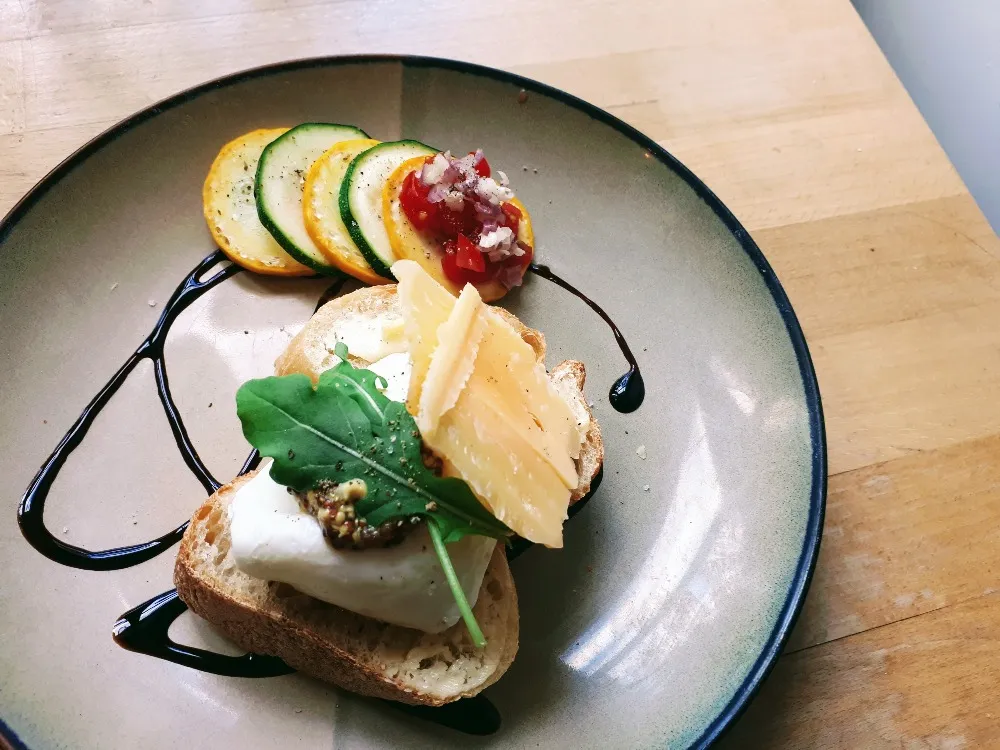Poaching an egg can turn an ordinary breakfast into something special. Poaching also elevates a simple ingredient, making it seem more fancy, worthy of being served for bunch or even as a light dinner.
The beauty of poaching an egg is that its also quite simple and doesn't take a lot of time which allows you to cook a fancy looking dish in only about 10 minutes or so.
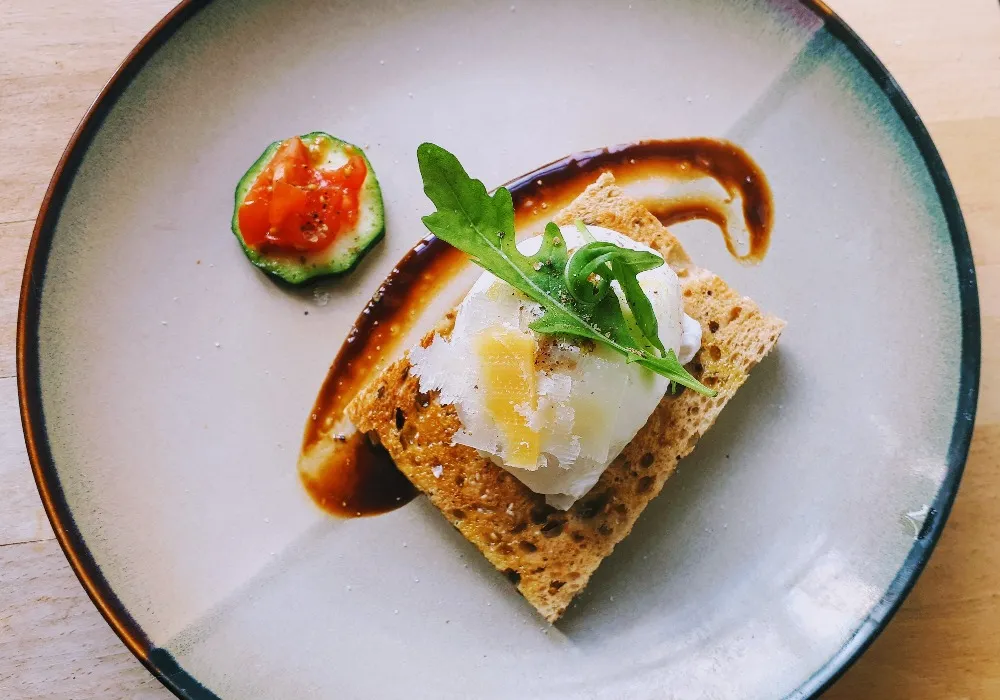
How to Poach and Egg
Bring water to boil in a pot or deep sauce pan then reduce the heat until the water is only slightly bubbling. I look for tiny bubbles. A vigorous boil will separate the egg white.
Add a small amount vinegar to the water. This helps the egg white firm up quickly and helps prevent it from dispersing in the water. Do not add salt to the water as it tends to separate the egg.
Crack the egg into a small bowl. Before adding it to the water. Cracking it directly into the water increases the chance of the yolk breaking and making a mess in the water.
Gently stir the water before adding the egg. A gently whirlpool will help the egg white wrap around the yolk.
Set a timer for 3 minutes. I've found that a cook time of 3 minutes will fully cook the egg white while leaving the yolk inside nice and runny. Times may very slightly depending on the temperature of the water.
Remove the egg with a sieve or slotted spoon and dry on a paper towel. Cut off and scraggly bits of egg white that don't look appetizing (optional).
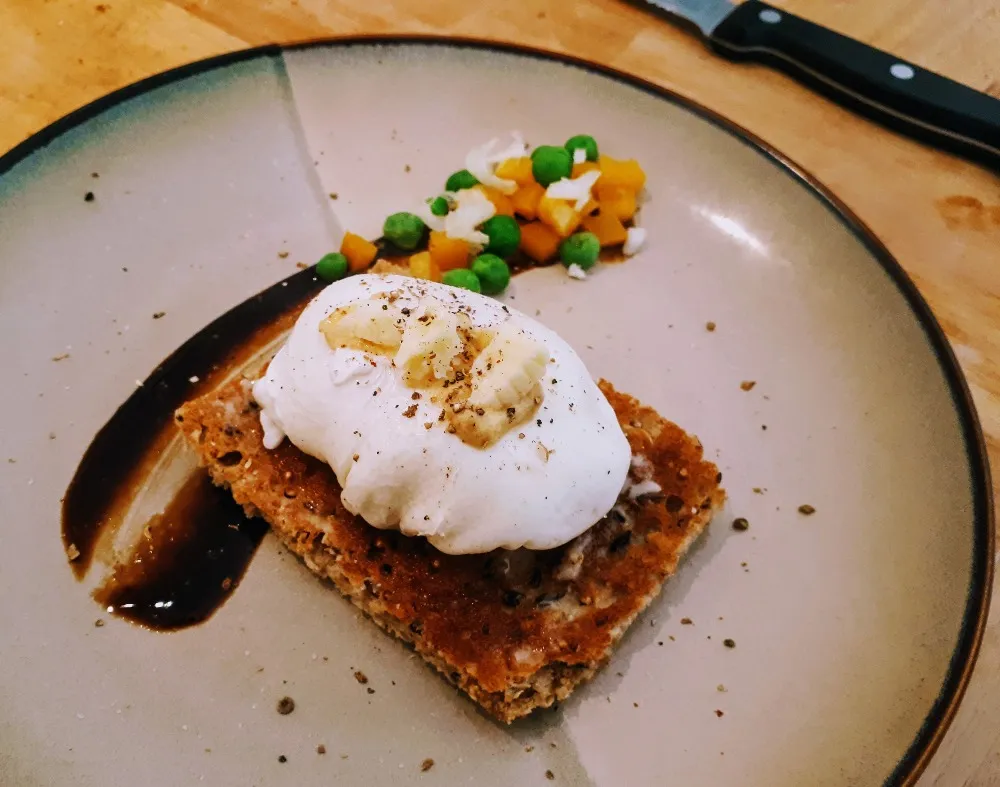
Ingredients
A poached egg can be served with just about anything, but some of the ingredients that I typically use when serving one are:
Balsamic glaze
Dijon mustard (both grainy and smooth)
Shallots or red onion
Garlic (raw or roasted)
Herbs and leafy greens: basil, cilantro, arugula and baby spinach
Vegetables that can be served raw for taste and texture: peppers, tomatoes, zucchini, squash and gently cooked peas.
Cheese: I like sharp and crumbly cheeses that won't melt on a warm egg.
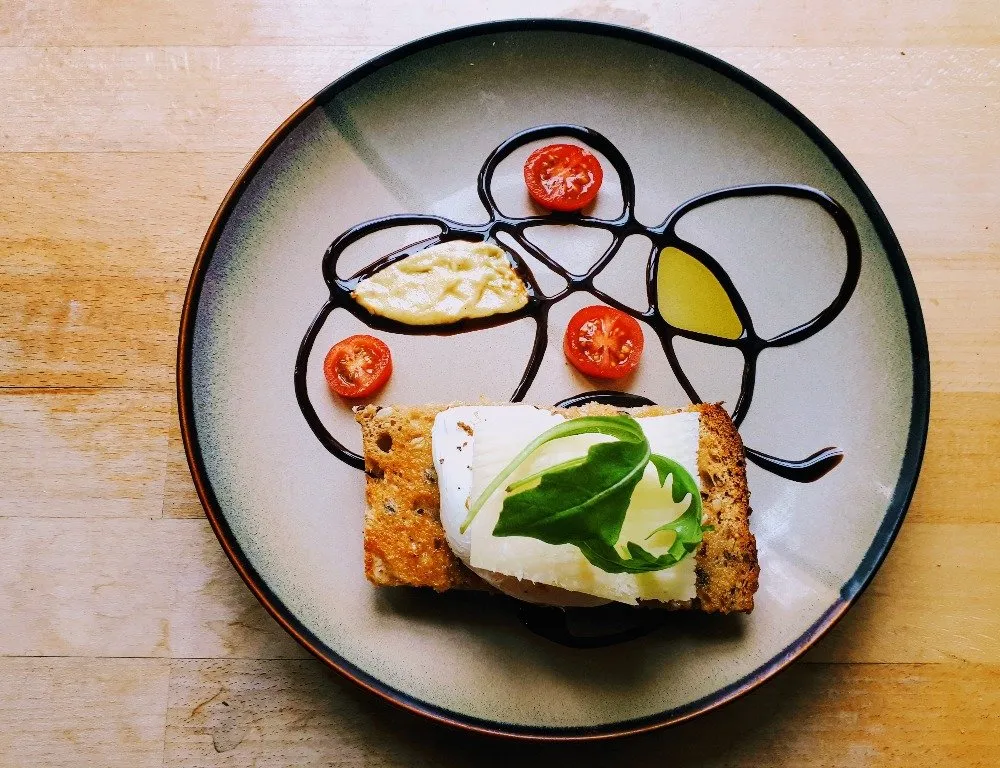
Tips and Tricks for Presentation
If you cut the crusts off of the bread it appears more fancy. You can also hide the crusts under the bread in order to elevate the egg off the plate. This adds to the presentation of the dish without wasting food and still maintains a good bread to egg ratio.
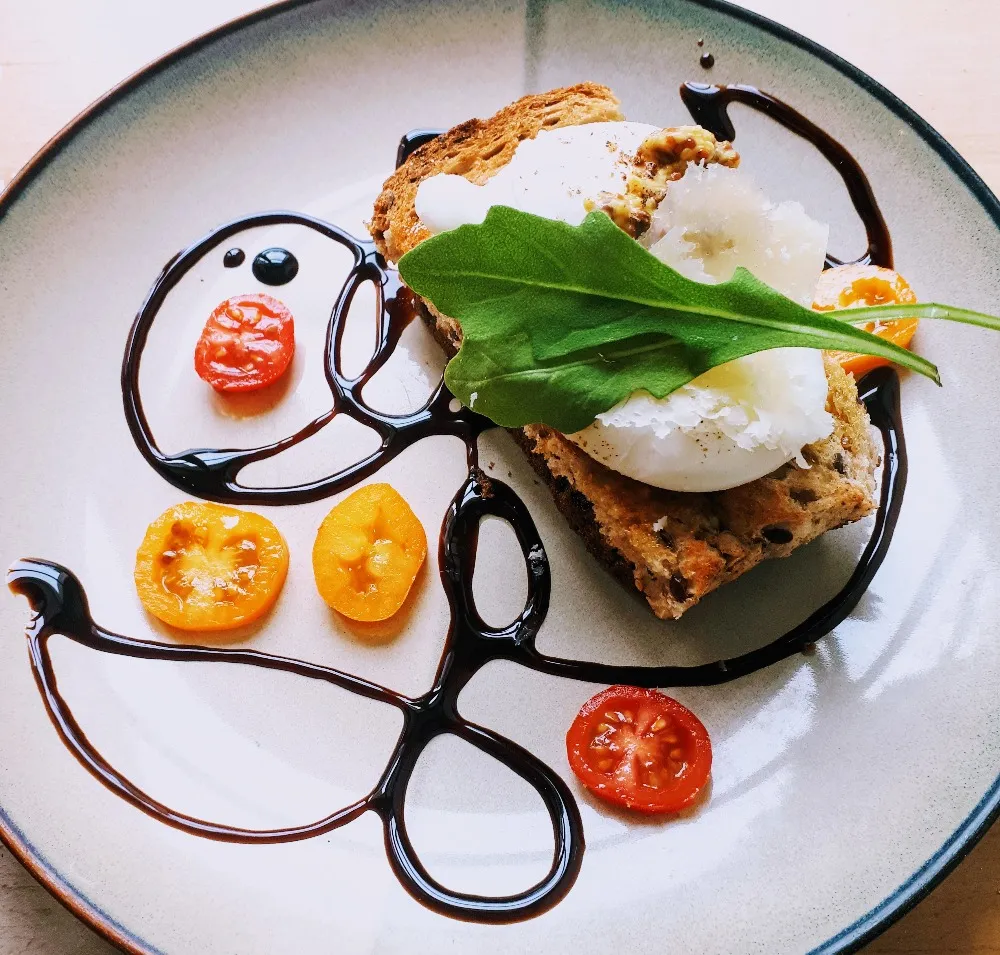
Cutting the vegetables into small pieces makes them appear more dainty and allows them to be placed in a creative sort of way on the plate. I like to use raw vegetables because they have more color and crunch and they reduce the amount of time spent cooking.
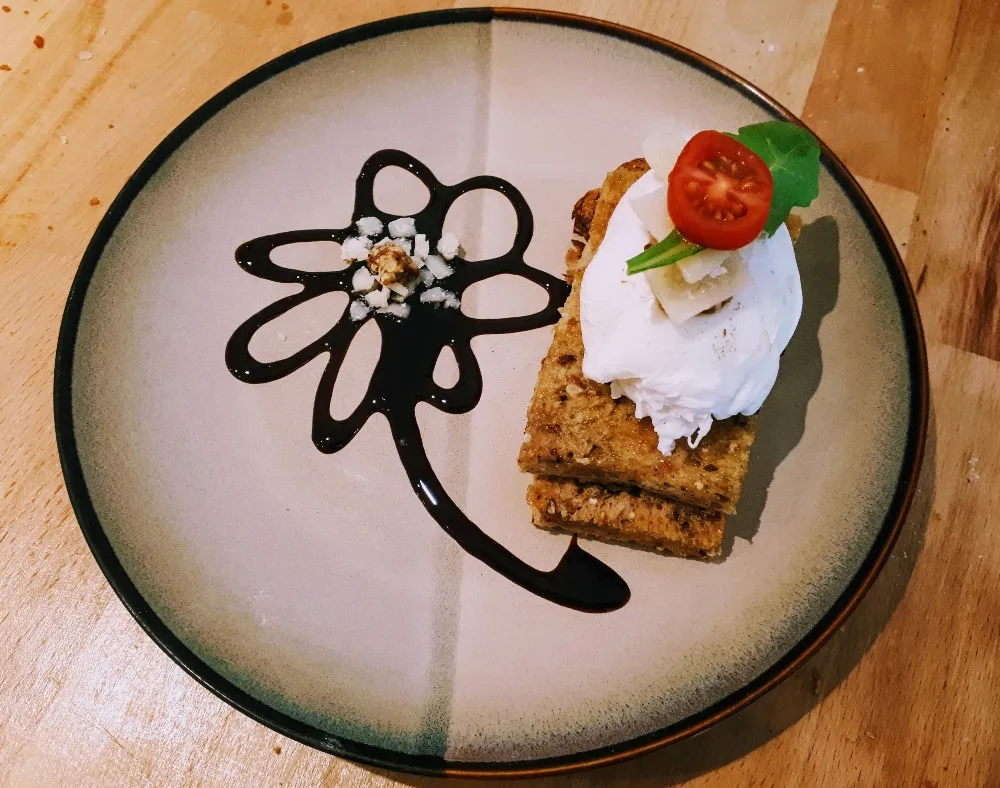
Balsamic reduction allows you to easily create an assortment of swirling designs. Also try to add color to the plate. I always want a green color and a red, orange or yellow color.
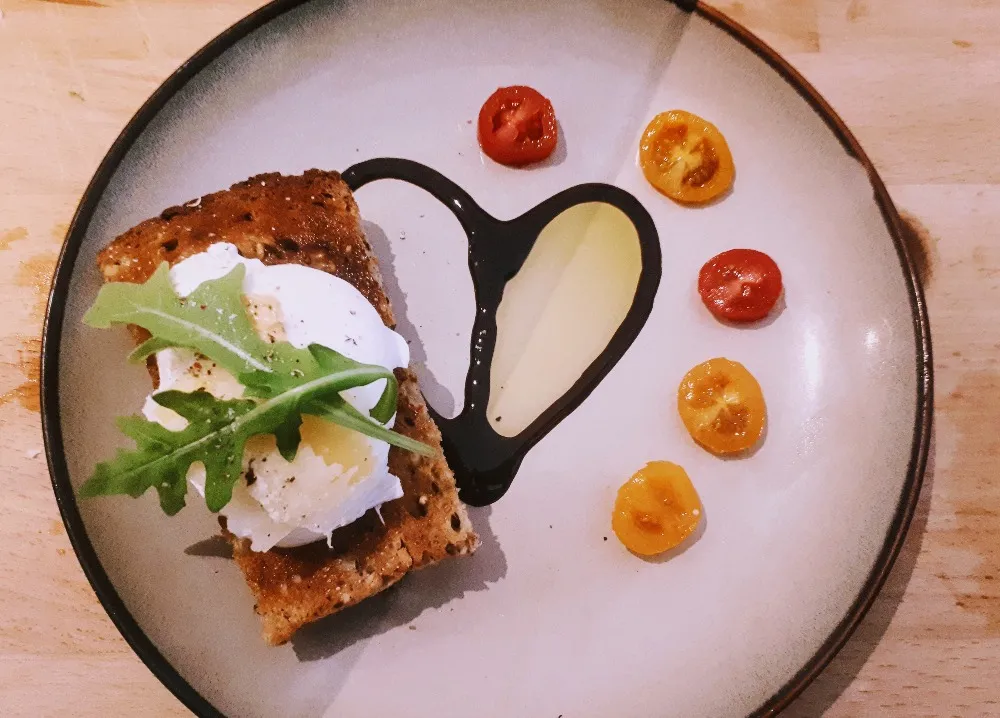
You can fill swirls in the balsamic glaze with olive oil, mustard or any other flavored liquids that go with the dish in order to add flavor and to create a sort of stained glass effect to the presentation.
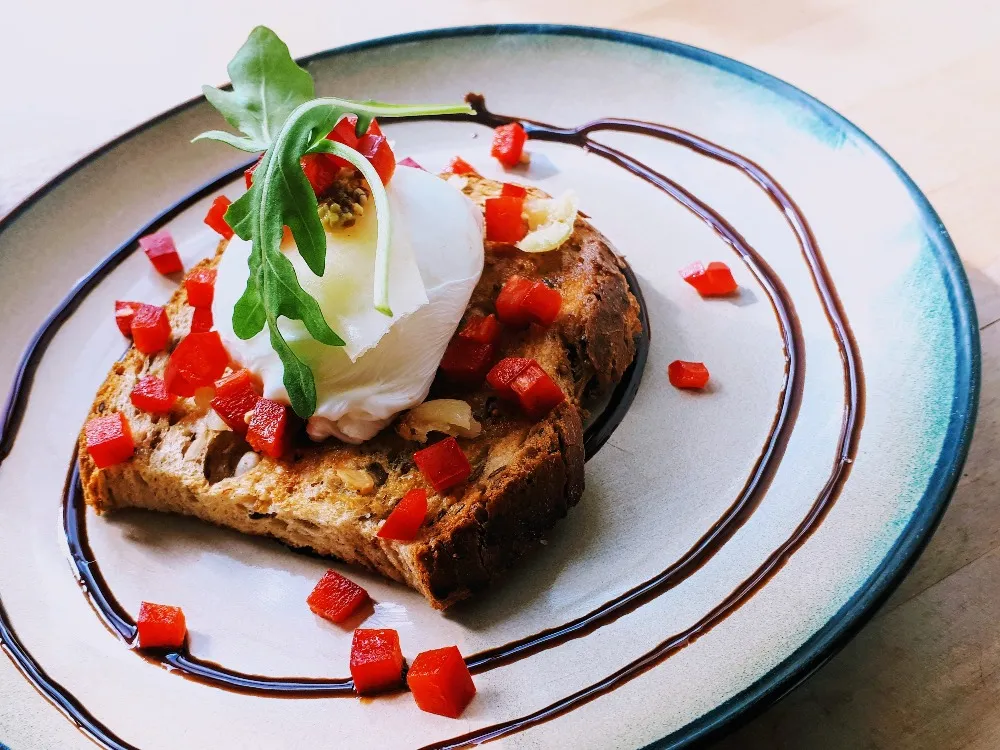
Cracked pepper, course sea salt, fresh herbs, grainy mustard's and sharp crumbly cheeses all add taste and texture to the dish and also bring that elevated fancy vibe to the overall meal.
